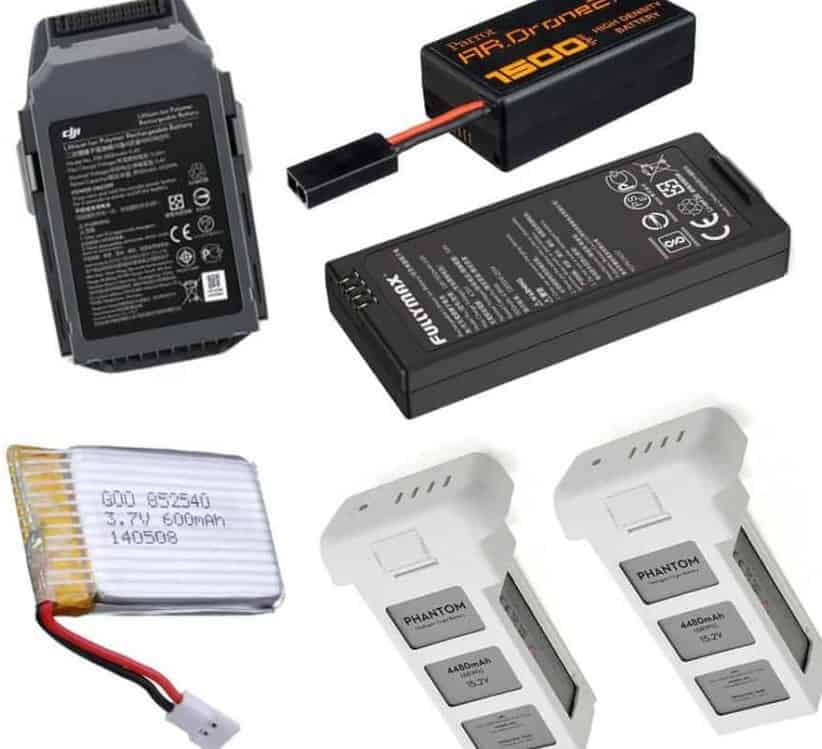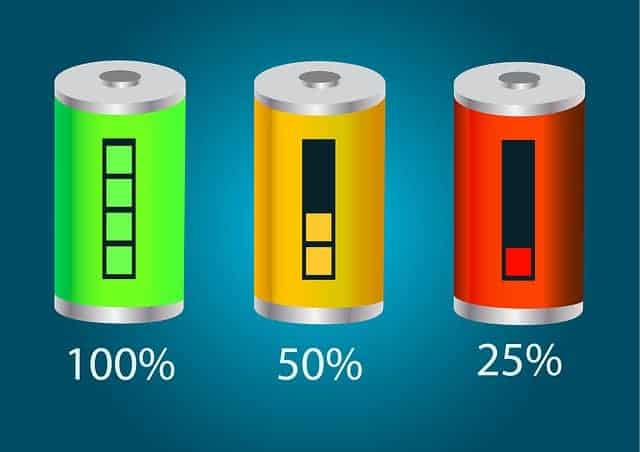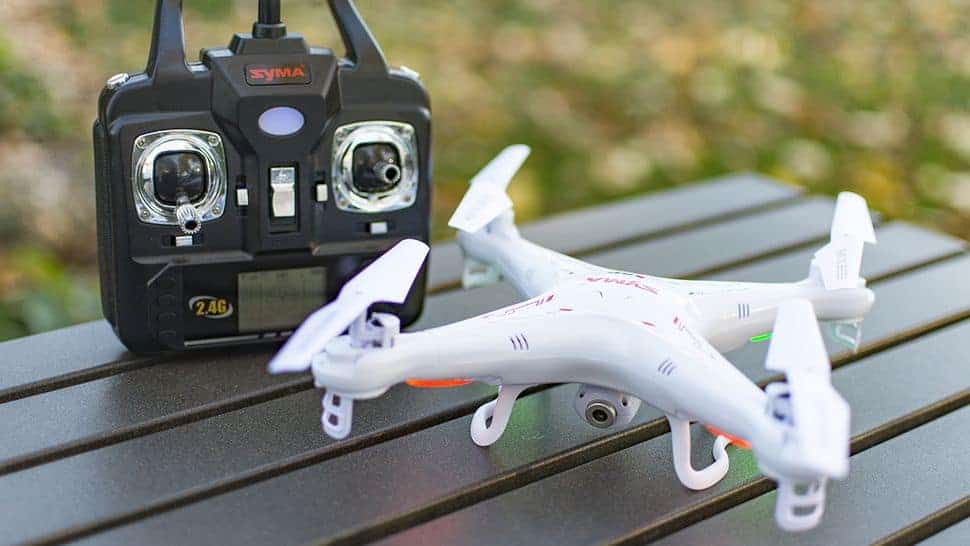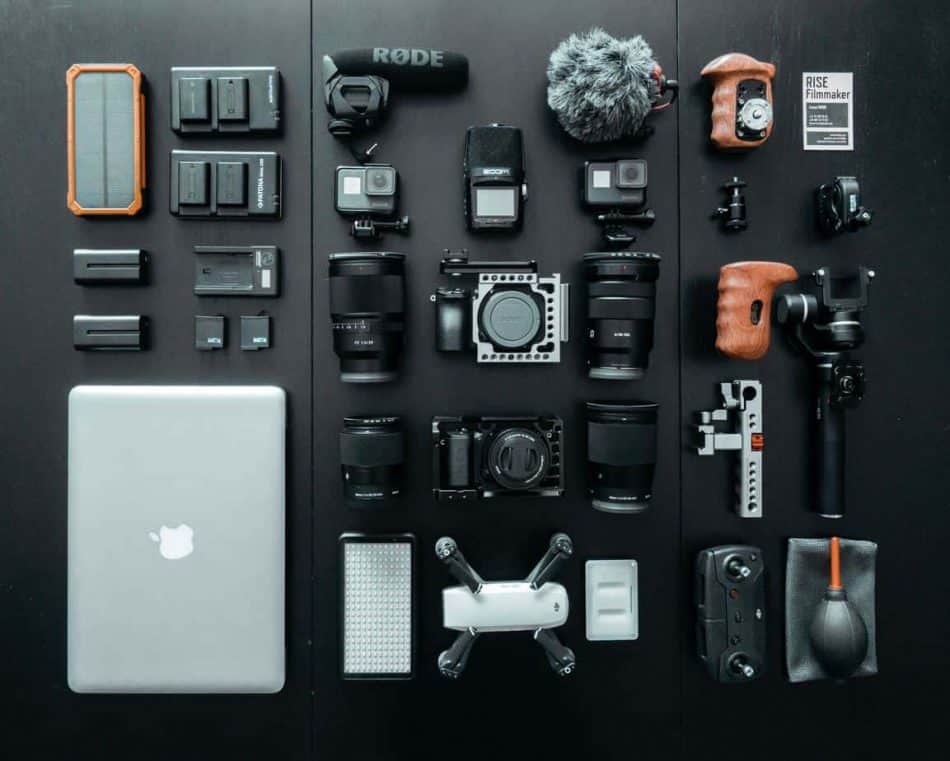
How Should I Store and Care for My Drone Batteries?
You have likely invested some money in your drone batteries. It makes sense that you would want to do everything possible to store and care for those batteries properly.
Drone batteries can come in one of three types. In this article, we will walk you through the types of batteries, including which may be the best choice for your Drone, and also provide you with all the information to properly store and care for your batteries.
Storage and Care for Drone Batteries?
Do drone batteries require special storage and care?
- Always store Drone batteries in a cool, dry place
- Follow manufacturer suggestion for storage capacity, usually 40% -50%
- Never over-charge your battery
- Use the appropriate charger for your batteries. Although you may be tempted to pick up a discount charger, the money you will save will only cost you more in the long run by decreasing the life of your batteries.
- Never completely discharge your batteries
Drone batteries are the only source of power for your Drone. Making sure to use, maintain, and store your batteries properly will help to ensure they have a longer life.
While batteries come in a few different types, the maintenance requirements for each are similar. In order to obtain the best battery performance and life from your battery, follow some simple tips.
Make sure always to store them in cooler environments, follow proper charging and discharging procedures, and always inspect your battery before use.
Read on for specific details about drone batteries, including what makes batteries different, and how to store and care for your batteries.
If you are looking for a particular battery I always found that Amazon had the best selection. Check to see if yours are in stock on Amazon.

Types of Drone Batteries
There are 3 types of batteries for drones, LiPo, NiMH, and NiCd. As drone technology advances and individuals search for batteries that are lightweight and provide the highest capacity and discharge rates, drone pilots are moving more and more towards LiPo.
We’ll focus on LiPo batteries, but many of the information can be used to store and care for the other types as well.
What Does LiPo Stand for in Batteries? Are they safe?
LiPo stands for Lithium Polymer. These batteries are safe if they are adequately cared for and handled in a way preventing damage.
Following safety procedures for charging, inspecting, storage, and use can help to ensure there will not be any unnecessary risks.
Incorrectly charging, overcharging, handling, or exposure to excessive heat can cause damage to the batteries. Damaged batteries can begin to leak, which leads to the possibility of a fire.
LiPo Battery Advantages
- Lightweight
- Available in a wide range of sizes and shapes
- High capacity batteries
- Increased discharge rates over other types of batteries
LiPo Battery Disadvantages
- Shorter lifespan than different types of batteries
- Risk of battery damage, which can lead to fire
- Requires special handling while using, charging, transporting, and storage
How Long Do LiPo Batteries Last?
LiPo batteries can last up to 300 charges. However, this can decrease drastically if they are not appropriately maintained.
To get the most extended life out of your LiPo batteries, follow these simple tips:
- Always store batteries in a cool, dry place
- Follow manufacturer suggestion for storage capacity, usually 40% -50%
- Never over-charge your battery
- Use the appropriate charger for your batteries. Although you may be tempted to pick up a discount charger, the money you will save will only cost you more in the long run by decreasing the life of your batteries.
- Never completely discharge your batteries

Knowing Your Battery Requirements
Your Drone will likely come with at least one battery. You can use this to determine what type of additional batteries you will need.
You can refer to your operator’s manual for manufacturer suggestions for batteries.
The numbers and labels on batteries provide essential information about the battery. But what do all those numbers mean?
Here is a rundown of this information to help you better understand what a battery consists of
Voltage and Cell Count
Voltage (V) is a measure of the strength of an electrical charge. This electric charge is a result of chemical reactions within the battery.
Voltage rates denote an average the charge of the battery, meaning that a 3.7V battery can produce an electrical charge between 3 and 7 volts.
LiPo batteries are available in battery packs, called cell counts, these are usually noted with voltage numbers that indicate the number of LiPo battery cells (3.7V each) are in each battery pack.
For example, a 7.4-volt battery will contain 2 individual LiPo cells.
Discharge Rate/Capacity
Most LiPo batteries have a rating of “C.” C stands for capacity; Capacity refers to the number of milliamp-hours (mAh) that a battery pack can hold/
This information will tell you the discharge rate potential of a battery.
What this means is that if you see a battery labeled as 1300 mAh 50C, this battery will produce 13 Amps of power and can be discharged at capacity 50 times the amperage, or 650 times.
Battery Connectors
Battery connectors come in several types, if you already own a drone, you should only use compatible battery connectors to ensure best safety practices.
If you have not already purchased a drone, you may want to choose a battery connector type, the important thing is to use the same connectors and not attempt to alter connectors.

Battery Storage
Before storing your drone batteries always drain them. Storing batteries that have not been adequately drained to recommended levels may cause unnecessary stress on the batteries, which can reduce battery life.
Draining can also reduce the risk of potential fire or damage to the battery and storage container.
How you store your batteries may vary depending on how often you plan to use them, how you will be transporting them, and in some cases, your location can have specific storage requirements.
Let’s look at the options available for these situations.
How Should I Store Drone Batteries While Traveling in A Car?
When storing your batteries for traveling by car or similar mode, you will want to ensure that your batteries are stored in appropriate containers.
There are many options, including retrofitting your own cases, but in all circumstances, batteries should be kept padded to reduce movement on the potential for damage.
Many drones can be purchased with accessory bundles that typically include adequate battery storage solutions. If not, you will want to purchase storage that offers plenty of room, while keeping batteries secure and provide little chance for excess movement.
When placing a battery storage case near other luggage or objects, do not compress the battery case, or place other cases on top of them.
This may increase the chance of damaging the batteries, which can create a potential risk of leakage or fire.
While there are many options, for increased safety, you can find fireproof and explosion-proof safety bags to transport and safely store your batteries.
In most situations, these types of bags can also be used to charge your batteries as well safely.
NEVER LEAVE BATTERIES IN A CAR – temperatures in a car can rise quickly, even on colder days. Heat can cause batteries to expand, causing them to leak, catch fire, or even explode!

Where Should I Store Them Between Flights?
In most cases, you can safely store your batteries between uses in the same storage cases that you use to transport your batteries.
When storing your batteries for any period, you should be sure to drain them.
Most manufacturers recommend discharging a battery to between 40 and 65% capacity with storing. This will help to prevent your battery from damage while not being used.
Do I Need to Drain Them After Each Flight?
After you have taken your Drone out for some flight time, you will need to take proper care of your batteries. This can vary depending on when you plan to operate your Drone again. Here are some general tips to keep in mind.
- If it will be 10 days or more before your next flight, be sure to discharge to the recommended storage level
- If you plan to fly within the next few days you will not need to discharge your batteries, but should still follow measures to store them, even if just overnight safely.
- Never leave your batteries connected to your Drone when not in use.
How Do Temperatures Affect the Flight Times?
You may be surprised to learn that temperatures can drastically affect the flight times you can reach with your Drone.
Cold temperatures can drastically shorten the capacity of your batteries, which can decrease your flight time by up to half their normal range.
For example, if you can typically get between 20 and 25 minutes of flight time from your batteries, colder temperatures can cause this to drop to between 10 and 15 minutes.
This is due to the chemical reactions within the battery slowing due to the cold. Battery warmers are also available for individuals that often fly in colder temperatures.
We have an in-depth article on Flying your Drone in Cold Weather Here on our website
In warmer temperatures, you will see your batteries perform at their peak. LiPo batteries are designed to withstand temperatures up to 104⁰F.
Though we would not recommend spending much time flying in a desert during the hottest times of the year. You may see a slight bump in flight times as a result.
We have an in-depth article on Flying your Drone in Hot Weather Here on our website
However, when flying in warmer temperatures, you should take extra care with your batteries after use. Allow batteries to cool down for 10-15 minutes before storing them for the trip home or charging.
Individuals that often fly in warmer temperatures should consider purchasing extra batteries, this will allow you to keep flying while giving your batteries more time to cool before charging again.
Can I Travel on A Plane with My Batteries?
Airlines have some restrictions regarding batteries. In most cases, you can take multiple batteries with you on a plane as long as the batteries are smaller than 100Wh.
Larger batteries may be allowed, but usually have limitations on the number, some as little as just 2 batteries.
Airlines each have their own policies and restrictions, regarding drones and batteries, so it is always a good idea to check before you book your flight. One airline, Delta, does not currently have policies that cover drones, but they do for batteries.
Individuals wanted to travel with their Drone AND batteries must contact the Dangerous Goods Department at least 10 days before the flight for approval.
For extensive information of traveling by plane with a drone, be sure to check out ourarticles on Travel and Cruising with your Drone There you will find everything you need to know about bringing a drone and its batteries on a plane.
You can also read our article Can I Travel with my Drone on our website here
Wrap Up
Hopefully, you have found this article to be helpful. We’ve included many tips for storing and caring for your drone batteries.
As batteries continue to improve, so does the technology for better storage, charge, and maintain your batteries.
In every case, you should always follow any manufacturer instructions included with your Drone or batteries.
I wish you a safe flight. Stay out of the trees.
